Your basket is currently empty!
Nityā Dēvi

Goddesses of Eternity


🔱
The Nityā Dēvis are a group of sixteen eternal goddesses in the Tantric Sri Vidya tradition, each representing a phase of the Moon and an aspect of consciousness. The lunar month consists of sixteen phases, or kalas, corresponding to the waxing cycle of the Moon. Of these, fifteen are visible, while the sixteenth remains hidden, symbolising a state beyond ordinary perception.
The visible phases are personified by the Nityā Dēvis, while the sixteenth, Lalitā Tripurā Sundarī, represents the unseen fullness that transcends the phases. As the moon remains itself, though appearing differently according to its phase, so too does Lalitā Tripurā Sundarī.
Nityā means eternal or everlasting, signifying these Goddesses’ connection to cosmic rhythms, transformation, and the flow of time. Each Dēvi presides over a lunar day and are radiant emanations of Lalitā Tripurā Sundarī, the supreme Śakti.
- Kāmeśvarī – Sparks the initial impulse of creation; desire as a sacred force.
- Bhagamālinī – Channels desire into organised energy, focused intention; attraction and alignment.
- Nityāklinnā – Softens the heart; emotional surrender and receptivity.
- Bheruṇḍā – Activates fierce transformation; breaks inner resistance.
- Vahnivāsinī – Kindles inner fire; purification and upward movement.
- Mahā Vajreśvarī – Grounds energy into stable channels; inner structure forms.
- Śivadūtī – Unites opposites; assertion of spiritual authority and discernment.
- Tvaritā – Accelerates inner progress; time compression and grace.
- Kulāsundarī – Balances and refines energy; beauty, harmony, and rhythm.
- Nityā – Brings constancy and presence; awareness beyond change.
- Nīlapatākā – Dispels illusion; assertion of higher vision and clarity.
- Vijayā – Triumphs over inner conflict; realisation of strength and focus.
- Sarvamaṅgalā – Spreads auspiciousness; brings joy, wellbeing, and integration.
- Jvālāmālinī – Encircles the soul in protective energy; radiance and containment.
- Citrā – Reflects full awareness; culmination, beauty, and clear vision.
- Lalitā Tripurā Sundarī – Represents perfection, divine unity, and the blissful stillness beyond cycles.
Symbolically, the Nityās also correspond to the 16 petals of the outermost lotus in the Śrī Cakra, and the 16 Sanskrit vowels.
Through their connection to the Moon, mantra, and the Śrī Cakra, the Nityā Dēvis offer a map of inner transformation, revealing the cycles of awareness, time, and spiritual awakening.
Kāmeśvarī
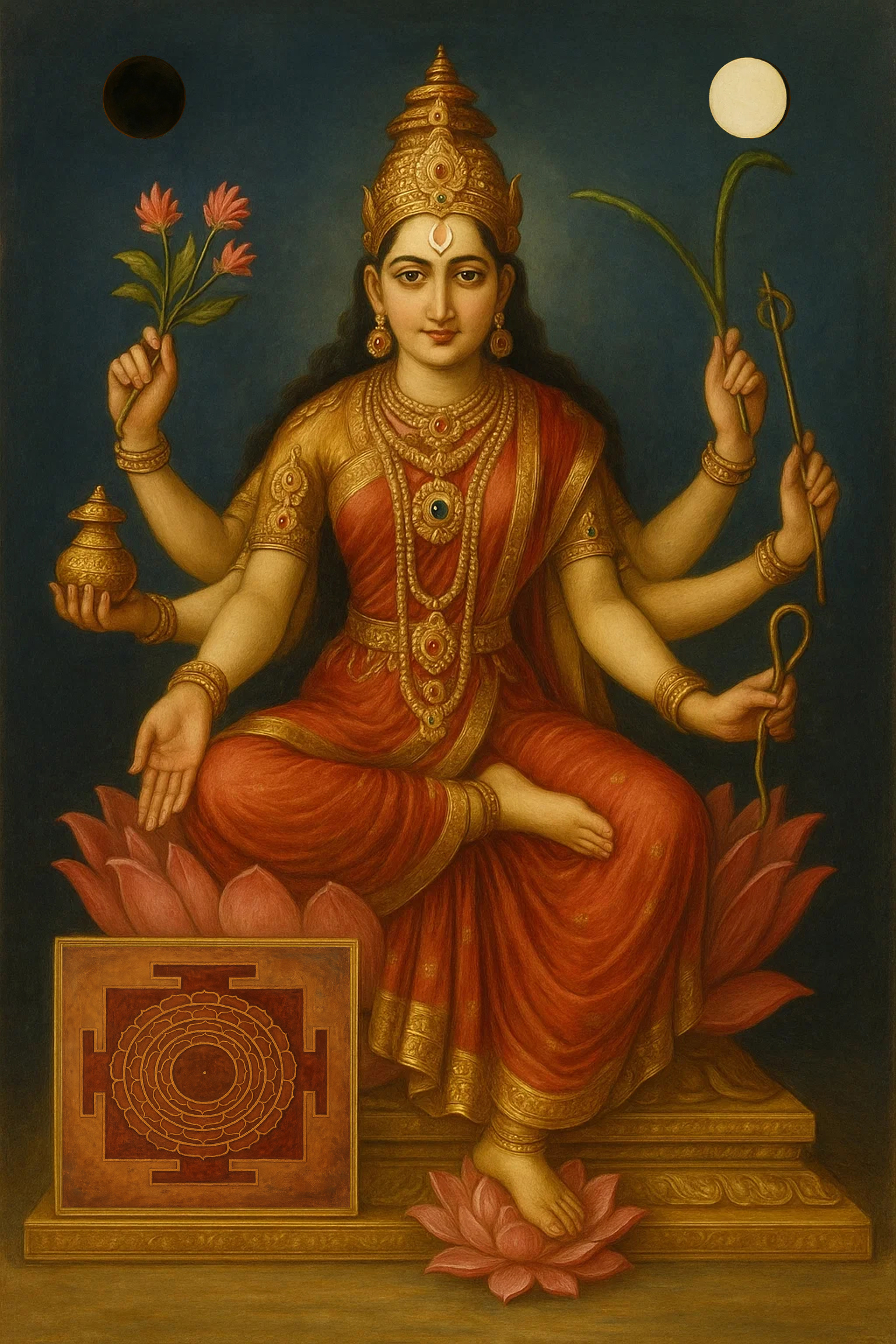
Goddess of Desire
She is the source of the primal spark, embodying Icchā Śakti, the power of divine will, the initiating force that sets the cosmos in motion. In Her, desire is not craving, but a movement toward expression, becoming, and fulfillment.
She is a reminder that all manifestation begins with longing, and that when aligned with truth, desire becomes a path to the divine.
Associated with the waxing moon’s 1st day – pratipadā.
Oṁ Hrīṁ Klīṁ
Kāmeśvarī Nityā Namahā

Bhagamālinī
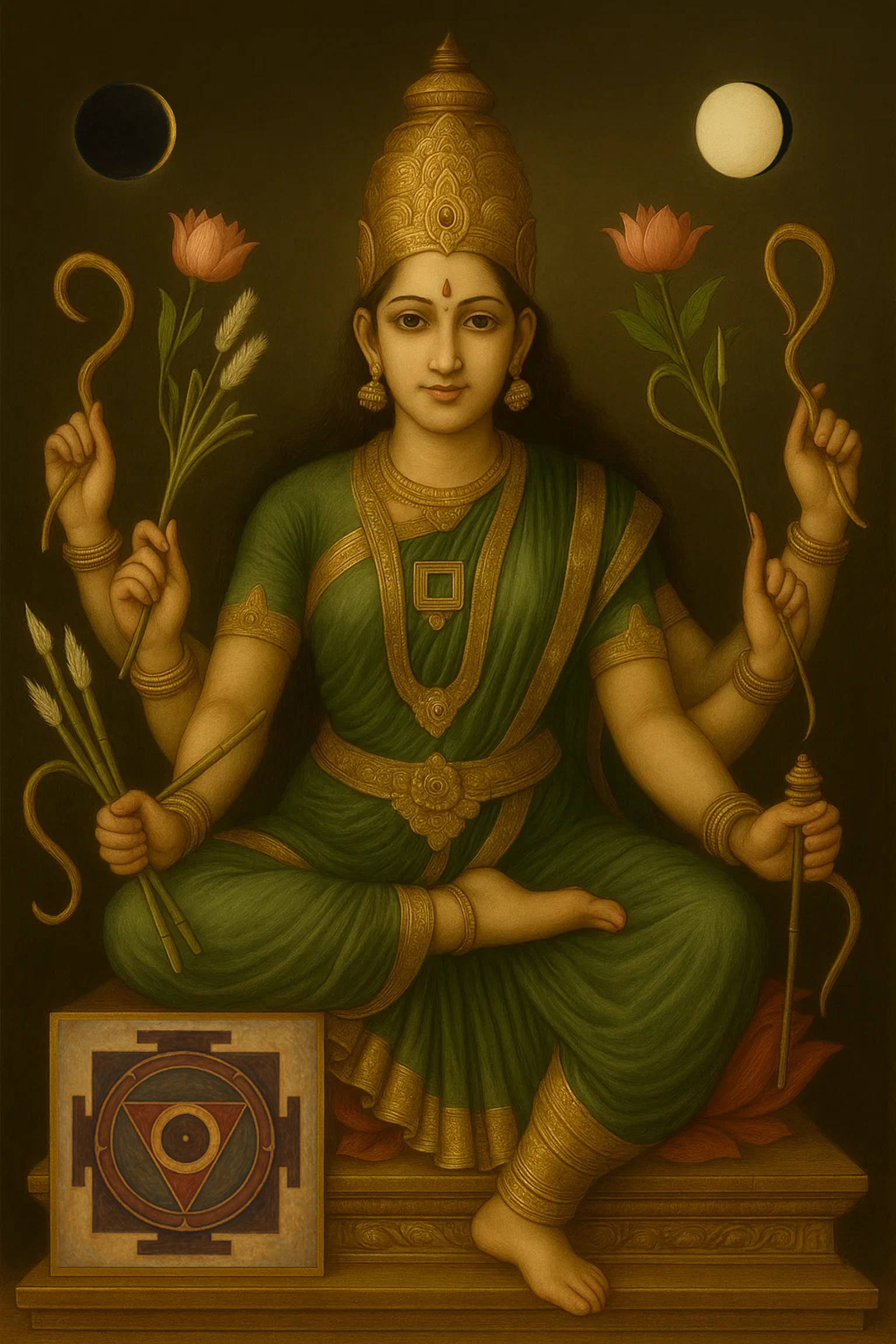
Flowering Yoni
She embodies the blossoming of desire into attraction, enjoyment and meaningful experience.
Her presence brings grace, confidence, and a deep sense of fulfillment, allowing one to savor the richness of life.
She transforms longing into a magnetic force that draws in joy and connection.
Associated with the 2nd lunar day – dvitīya.
Oṁ Blūṁ
Bhagamālinī Nityā Namahā

Nityāklinnā
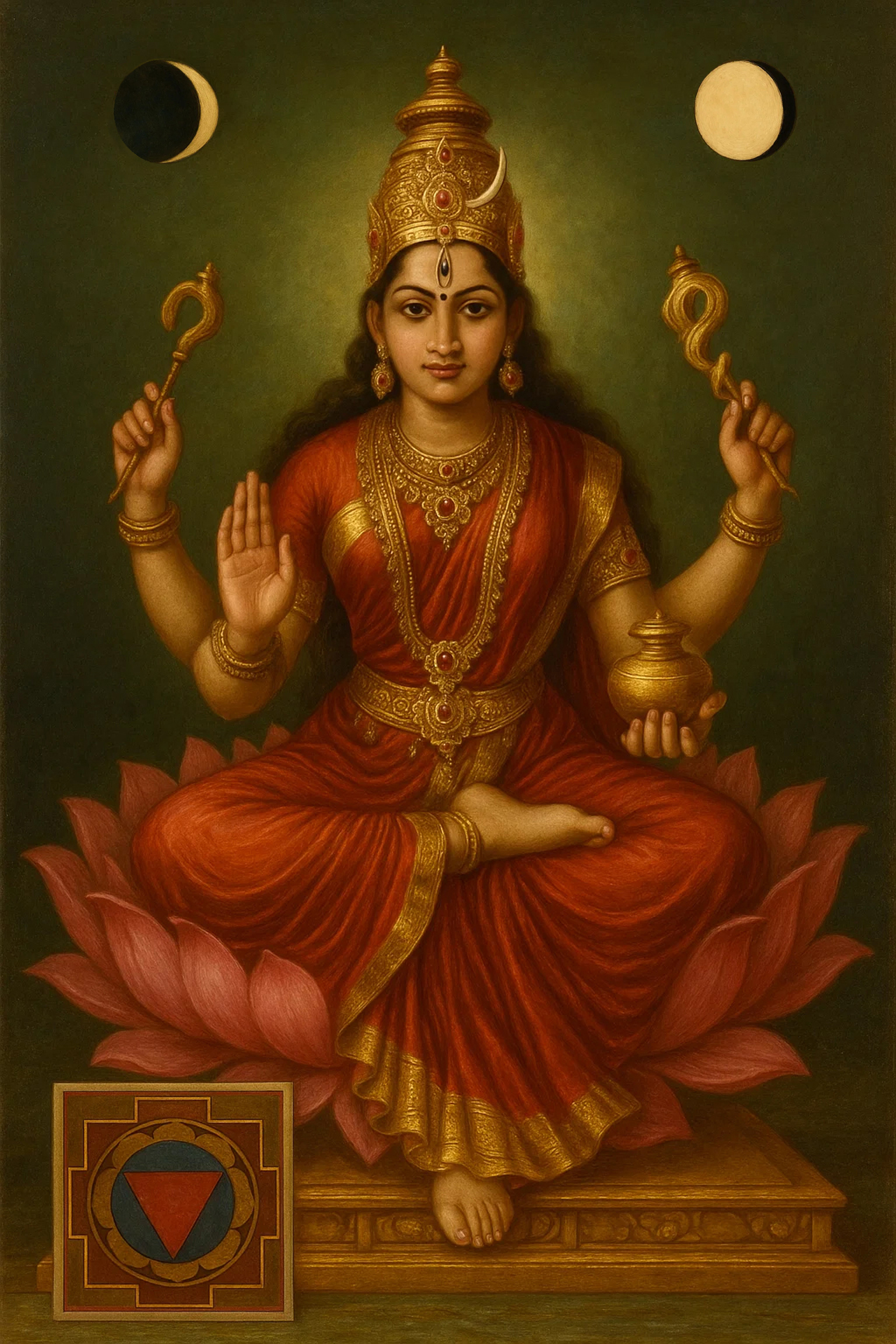
Goddess of Divine Grace
Her name means Ever Moist, symbolising a heart that is always open, softened by compassion and surrender.
She represents the melting of ego into devotion and emotional intimacy with the divine.
Her energy is sensuous, tender, and magnetic, helping dissolve inner rigidity and awaken emotional intelligence.
Associated with the 3rd lunar day – tṛtīya.
Oṁ Hrīṁ Klīṁ
Nityāklinnā Nityā Namahā

Bheruṇḍā
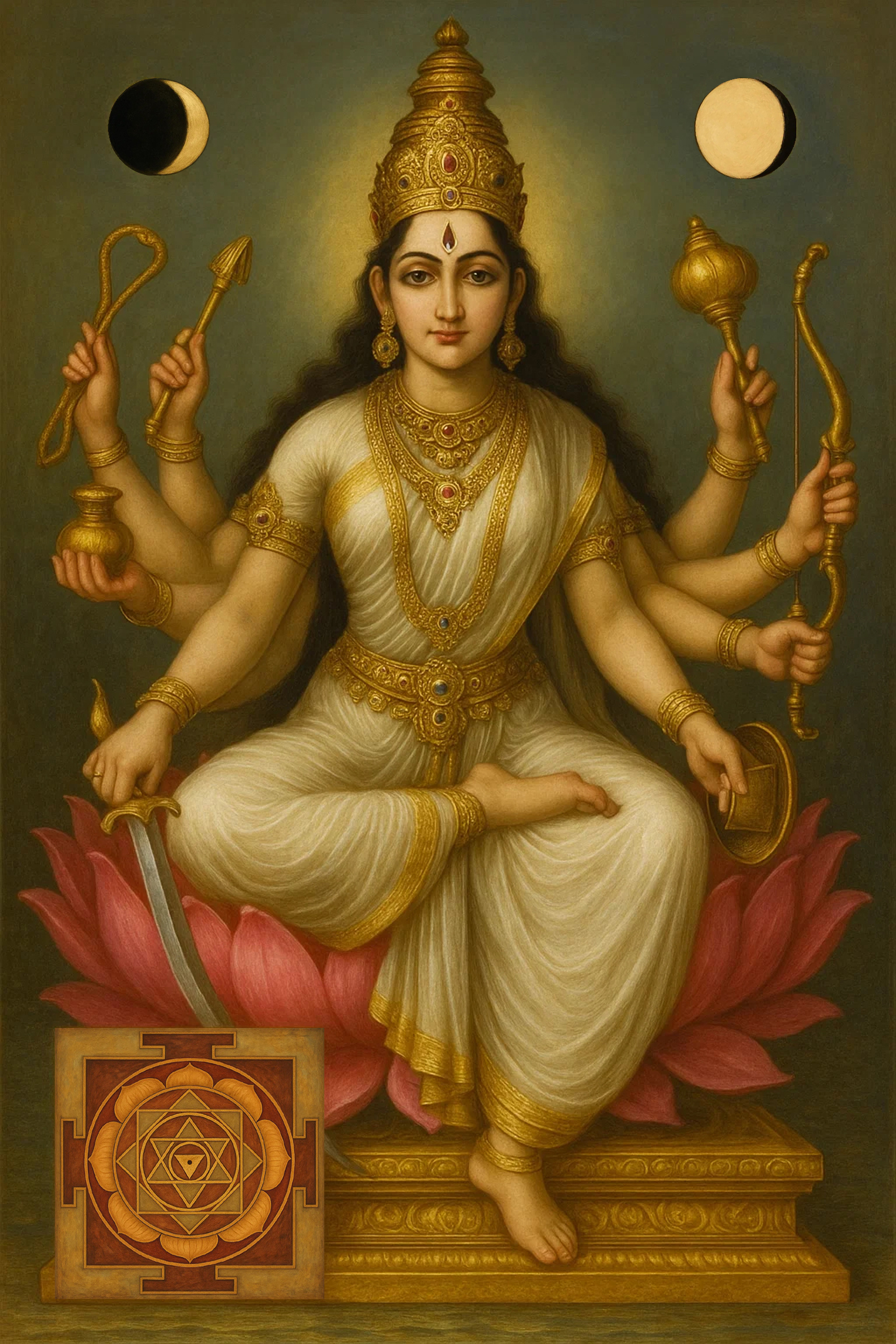
Goddess of Fearlessness
She is the fierce aspect of the Goddess who destroys arrogance and ignorance. Her power helps cut through delusion and egoic resistance with her fierce, purifying energy.
She is a reminder that true growth sometimes requires facing the darkest shadows. Bheruṇḍā is the destroyer of obstacles, both inner and outer.
Associated with the 4th lunar day – chaturthī.
Oṁ Kroṁ
Bheruṇḍā Nityā Namahā

Vahnivāsinī
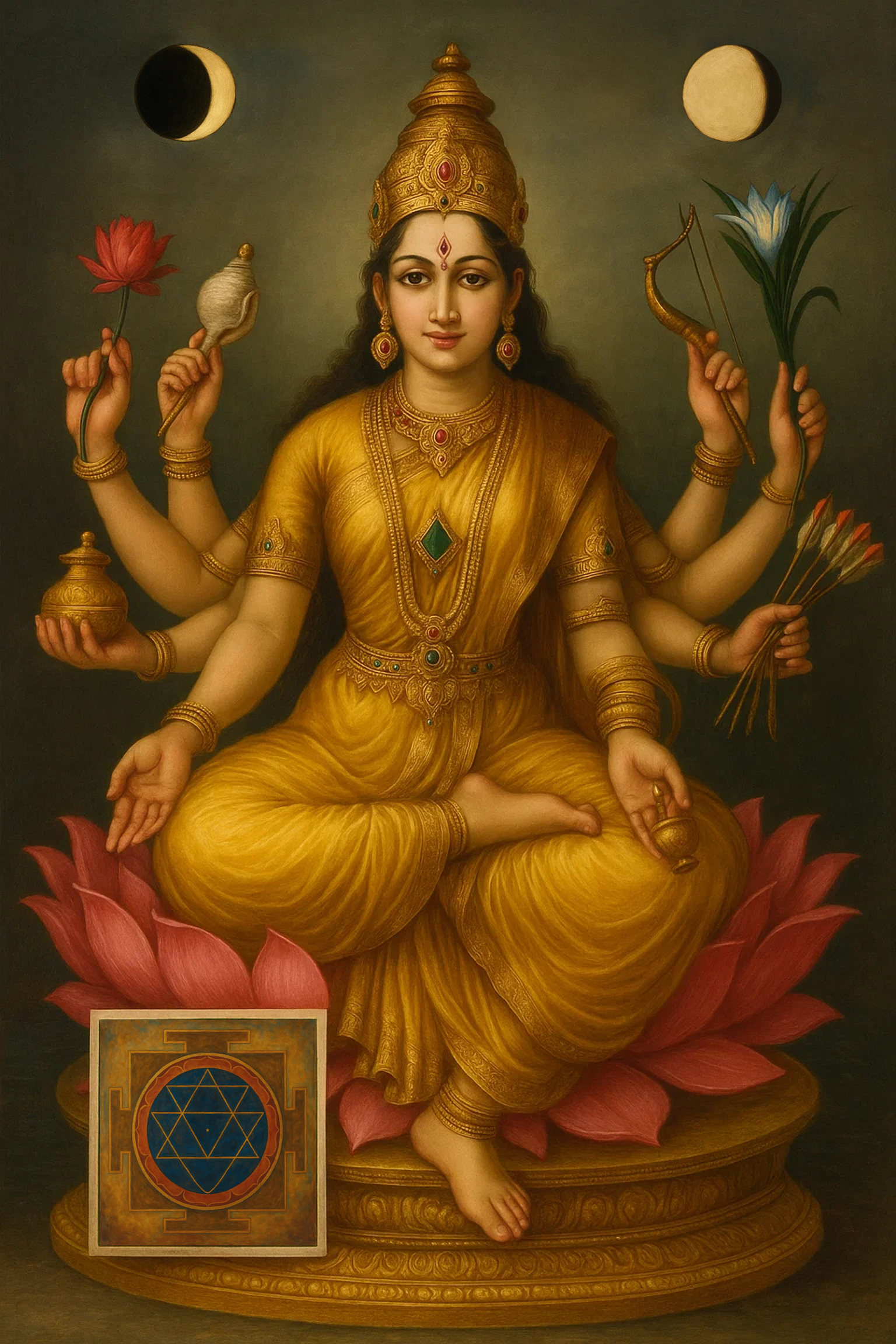
Goddess of Purification
Dwelling in the heart of fire, She embodies the fierce grace of purification and inner transformation. Her essence is Agni, the divine fire, burning away all that is impure, stagnant and obstructive, revealing the essential brilliance of the true Self.
Her flames illuminate the path of inner truth, guiding the soul onward through layers of resistance and shadow.
Associated with the 5th lunar day – pañcamī.
Oṁ Hrīṁ Rāṁ
Vahnivāsinīyai Nityā Namahā

Mahā Vajreśvarī
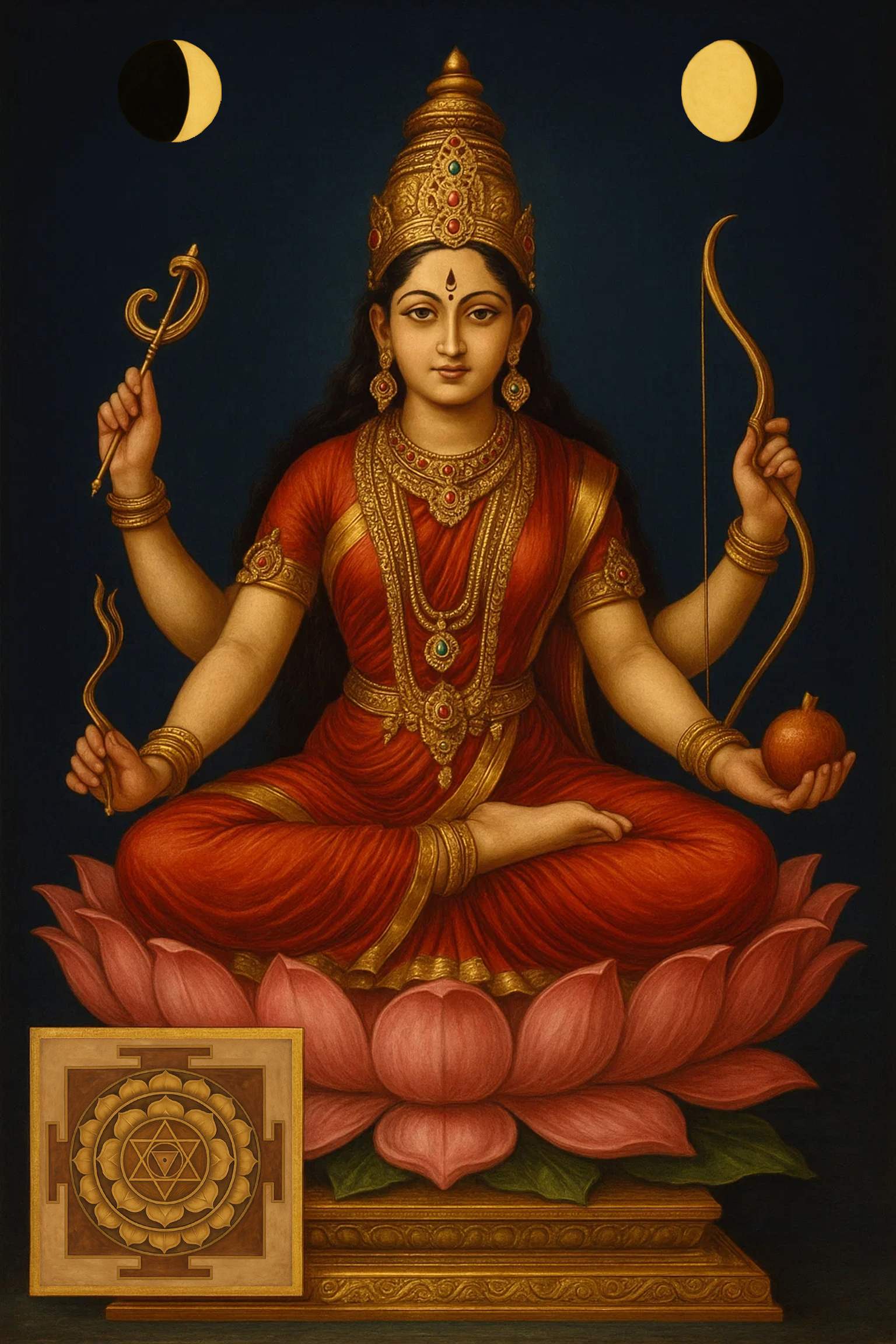
Goddess of Invincibility
She embodies the unstoppable force of divine truth and clarity.
Associated with the vajra (thunderbolt), a symbol of indestructibility and spiritual power, She shatters stagnation and inertia with a single, illuminating strike. Like lightning, Her presence is sudden, brilliant, and impossible to ignore. She pierces through the clouds of confusion and delusion, catalysing powerful inner breakthroughs and awakening.
She is a reminder that true strength lies in unshakable awareness and the courage to cut through illusion.
Associated with the 6th lunar day – ṣaṣṭi.
Oṁ Hrīṁ Hrūṁ
Mahā Vajreśvarī Nityā Namahā

Śivadūtī
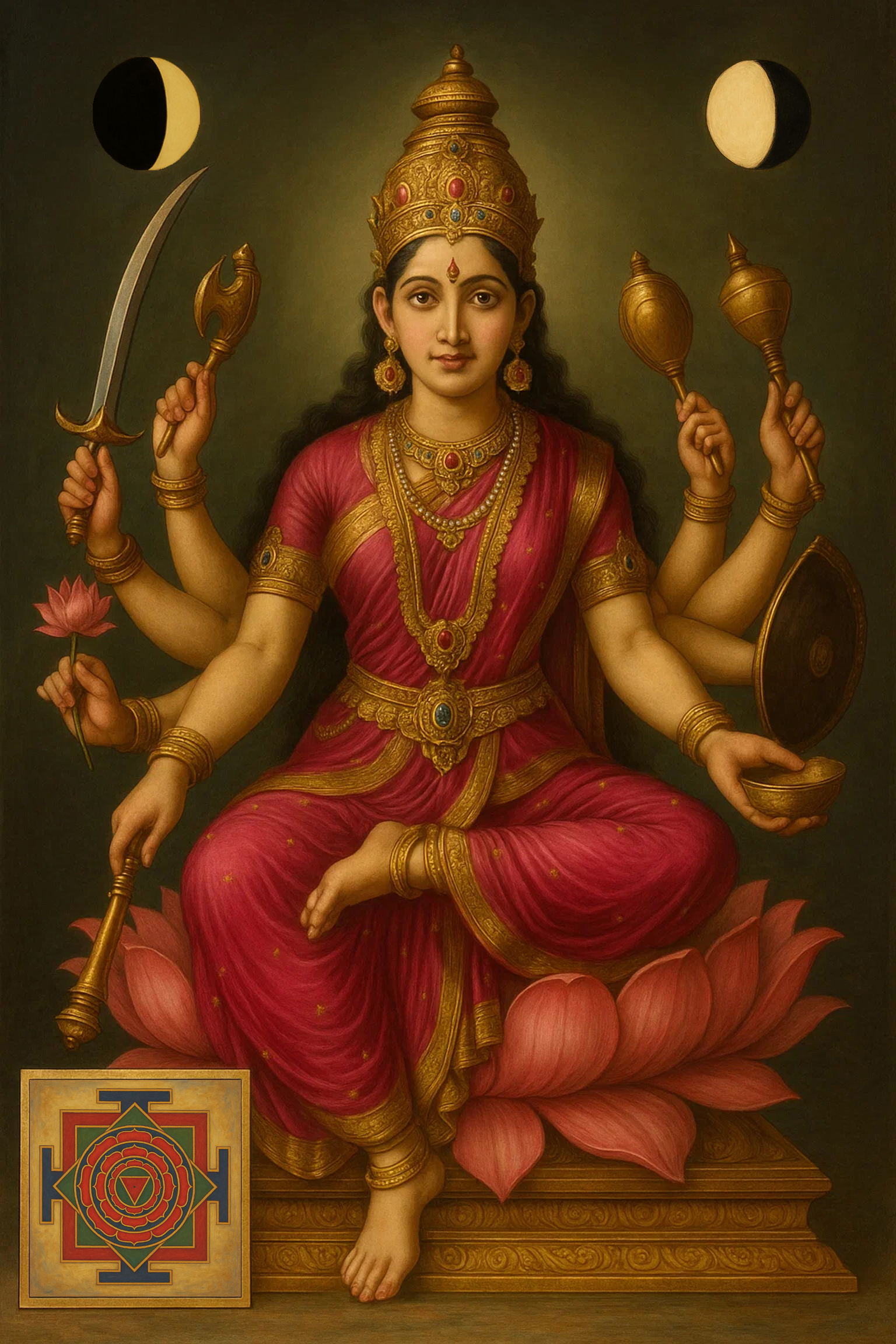
Messenger of Śiva
She embodies the fierce, commanding force of divine will in motion, often appearing in myths delivering divine will with unwavering precision and authority.
Her presence is a reminder to act decisively and fearlessly in alignment with dharma.
Fierce in Her wisdom and uncompromising in truth, She inspires to cut through doubt and hesitation, and to step boldly into righteous action.
Associated with the 7th lunar day – saptamī.
Oṁ Aiṁ Hrīṁ Śrīṁ
Śivadūtāyai Nityā Namahā

Tvaritā
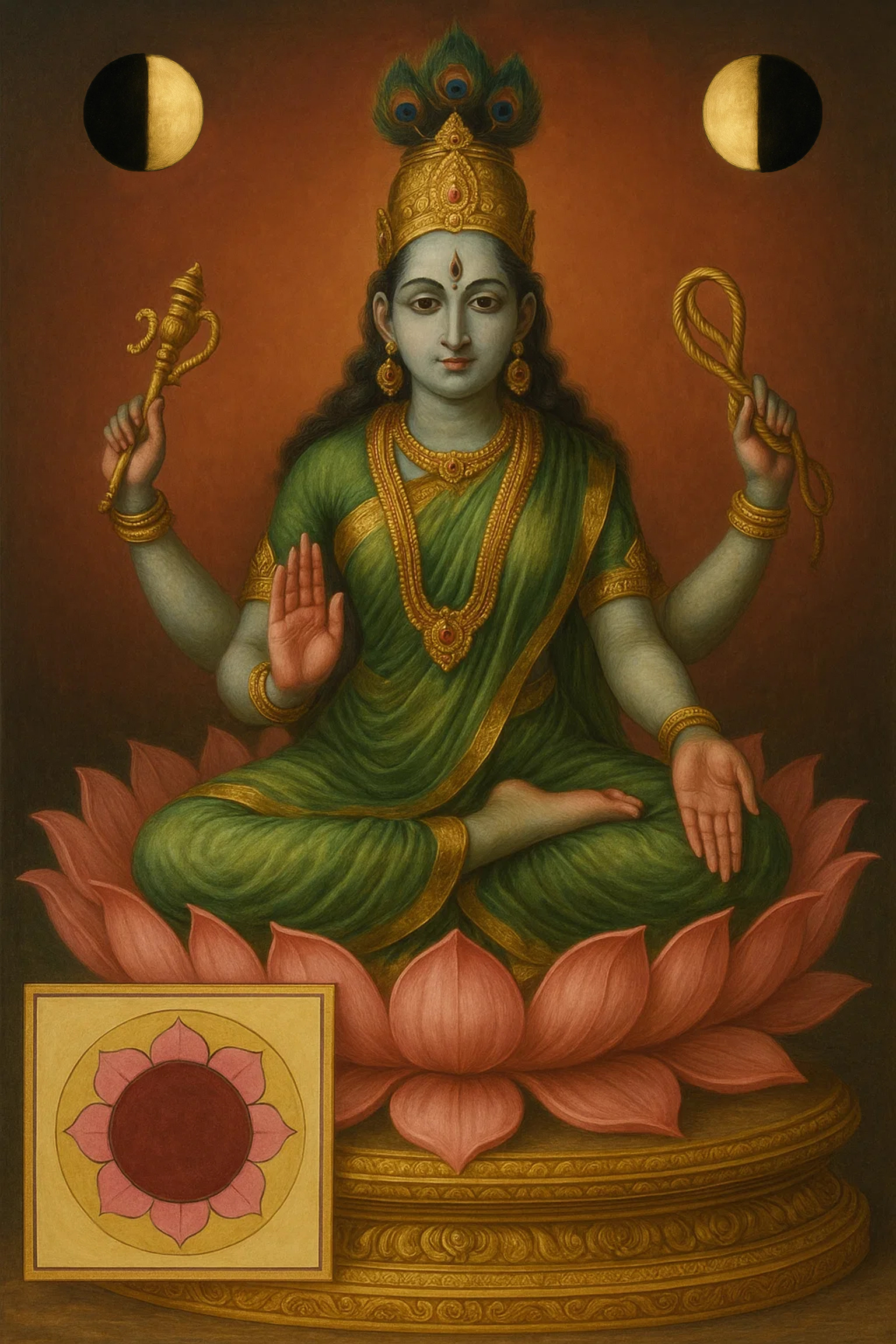
Goddess of Swiftness
She responds rapidly to fulfill prayers and clear karma, acting with the speed of lightning. Her blue complexion symbolises freshness and vitality.
Her energy brings quick liberation, divine intervention, and miraculous shifts. She is called upon in urgent spiritual needs or when transformation is sought swiftly.
Her presence is merciful and immediate, cutting through delay and karmic inertia.
Associated with the 8th lunar day, half moon – aṣṭamī.
Oṁ Hrīṁ Hūṁ
Tvaritā Nityā Namahā

Kulāsundarī
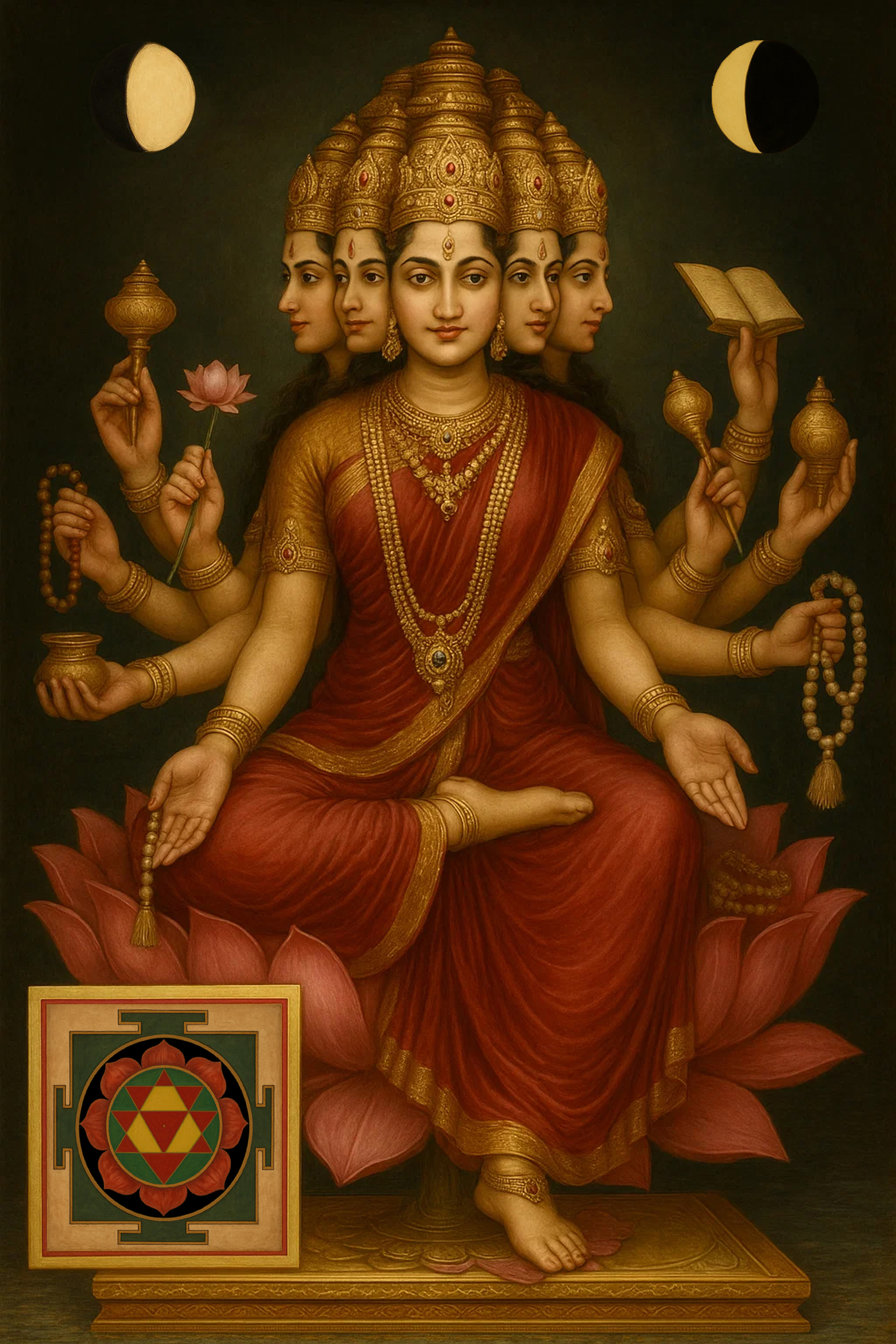
Goddess of Divine Community
Kulā refers to the spiritual family or sacred tradition, and Sundarī means beauty. She is the embodiment of refined grace upholding the lineage and integrity of the Tantric path.
Kulāsundarī shines with inner beauty, elegance, and serenity. She is the keeper of sacred knowledge, the one who blesses the sincere seeker with access to higher wisdom.
Associated with the 9th lunar day – navamī.
Oṁ Aiṁ Sauḥ
Kulāsundarī Nityā Namahā

Nityā
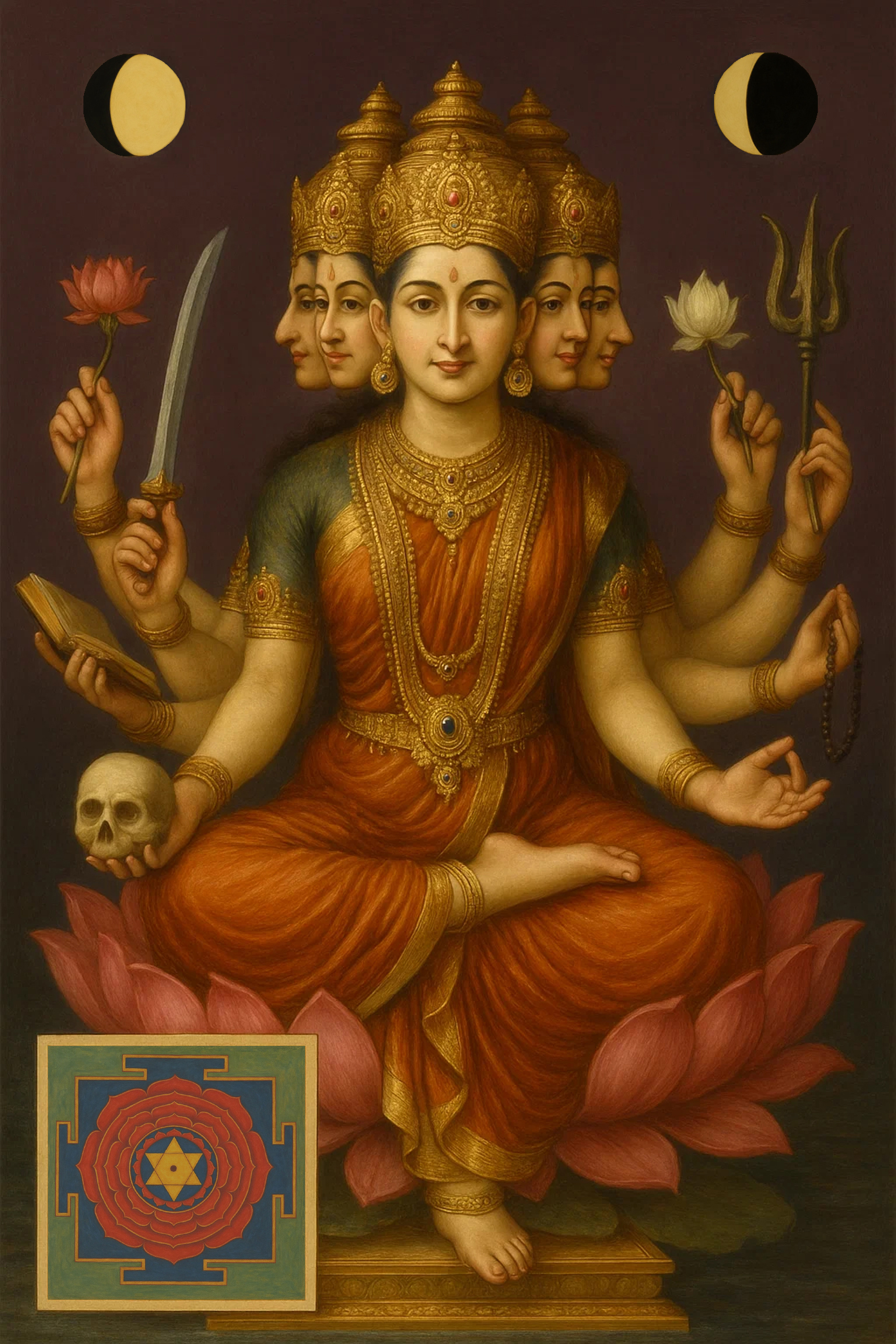
Goddess of Eternity
Nitya means eternal, pointing to the essence of pure existence and timeless awareness. She is the subtle, silent witness behind all thoughts and experiences — unmoving, ever-present, and beyond time, change, or decay.
While the world shifts and transforms, Nityā remains unchanged, the serene ground beneath all movement.
Associated with the 10th lunar day – daśamī.
Oṁ Hrīṁ Sauḥ
Nityā Nityā Namahā

Nīlapatākā
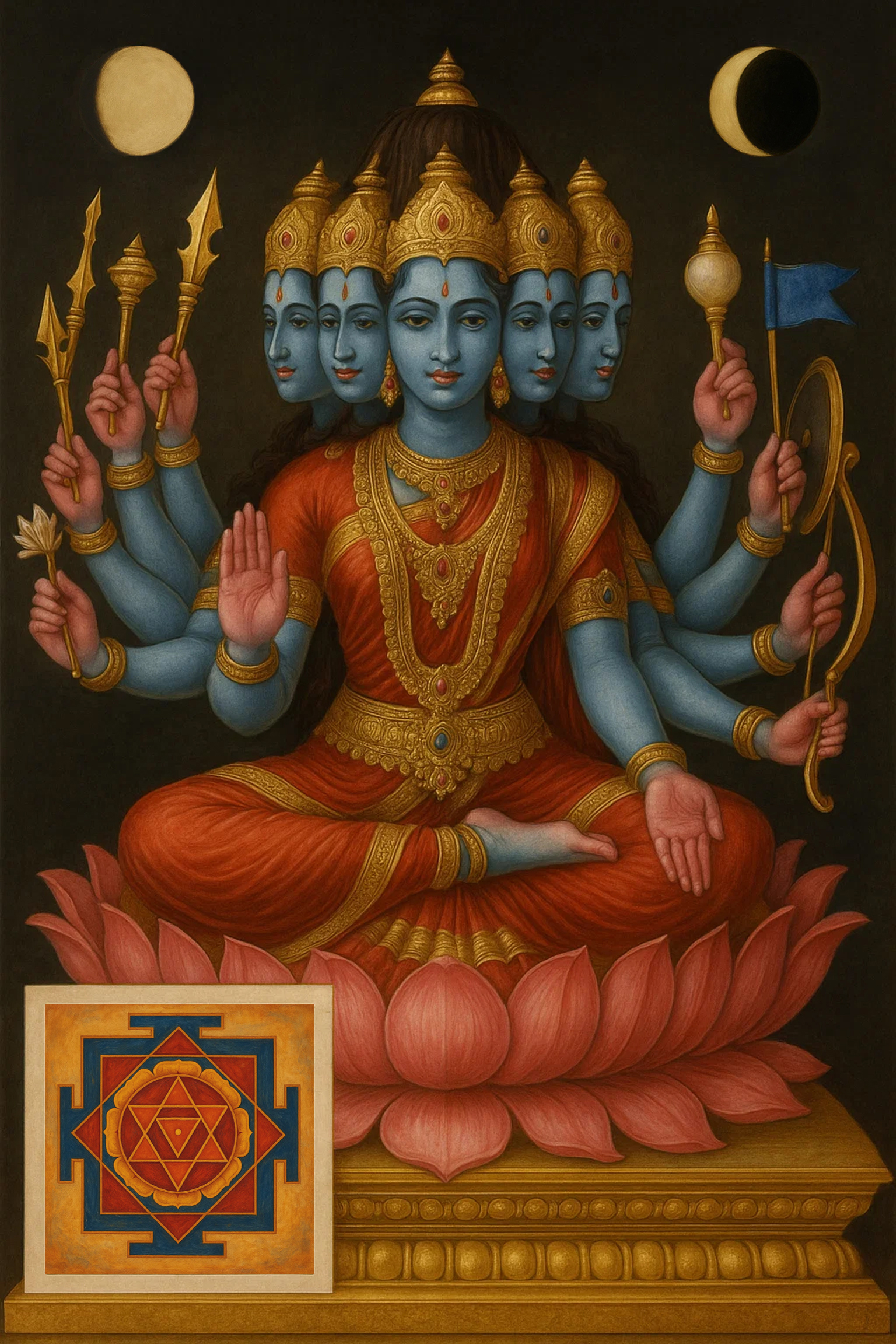
Goddess of Divine Sovereignty
She embodies the sovereign power of sacred sound — the force through which reality is named, shaped, and commanded. As the divine principle behind language and vibration, She governs the transformative power of mantra, speech, and thought.
Her presence inspires clarity in communication and encourages the mindful use of words as tools of invocation, alignment, and creation. She is a reminder that language is not merely descriptive, but creative — that words carry the energy to shape our inner and outer worlds.
Associated with the 11th lunar day – ekādaśī.
Oṁ Hrīṁ Śrīṁ
Nīlapatākā Nityā Namahā

Vijayā
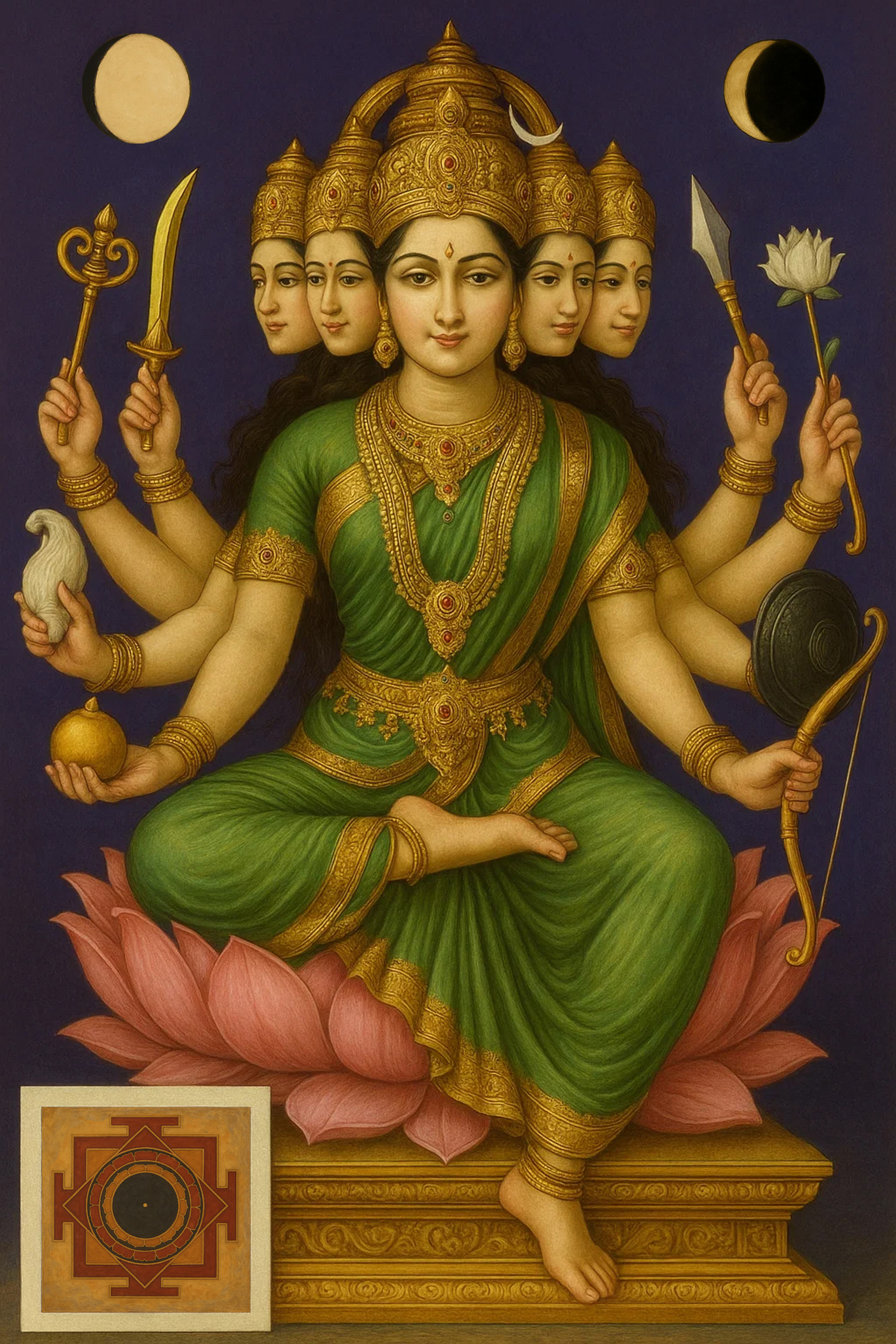
Goddess of Victory
Vijayā, whose very name means Victory, is the divine force that ensures success over obstacles, both seen and unseen. She manifests as a warrior goddess, armed and radiant, ever ready to protect the spiritual journey of the devotee.
Her energy instills courage, determination, and unwavering strength, empowering us to rise above inner doubts, fears, and external challenges.
Associated with the 12th lunar day – dvādaśī.
Oṁ Hrīṁ Hrāṁ Aiṁ
Vijayā Nityā Namahā

Sarvamaṅgalā
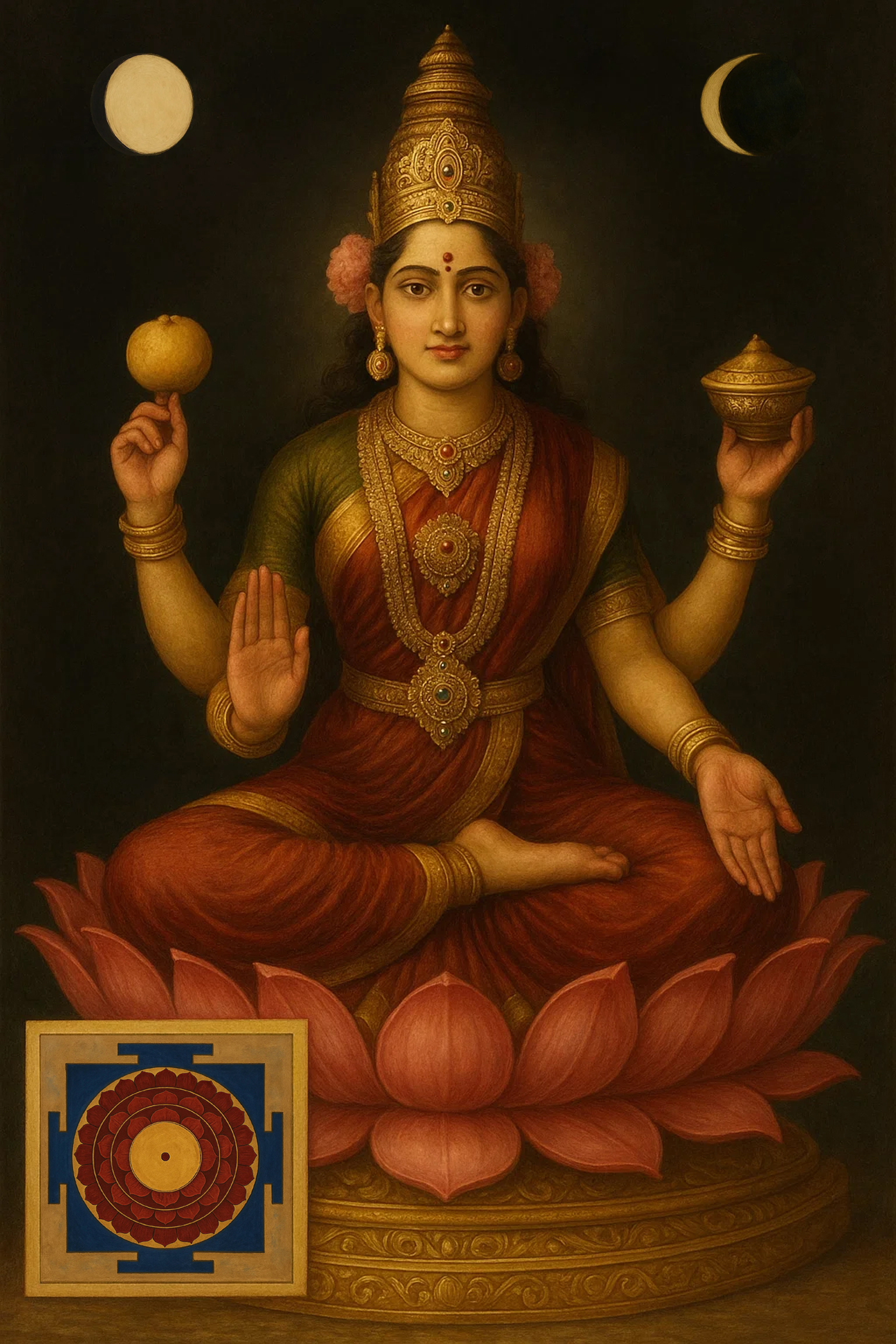
Goddess of Blessings
She is the all-auspicious Goddess, who’s presence radiates peace, harmony, and benevolence. She blesses all beings with wellbeing, and her energy brings balance to mind, body, and spirit. Sarvamaṅgalā is invoked for household peace, harmonious relationships, and spiritual contentment.
Associated with the 13th lunar day – trayodaśī.
Oṁ Hrīṁ Aiṁ
Sarvamaṅgalā Nityā Namahā

Jvālāmālinī

Goddess of Radiant Light
Her name means Garlanded With Flames, and She embodies the radiant energy of tapas — disciplined spiritual practice.
Her blazing presence purifies in the fire of transformation, removing all that hinders the soul’s ascent.
She also symbolises kundalini energy rising through the chakras, awakening divine consciousness within the body.
Associated with the 14th lunar day – caturdaśī.
Oṁ Hrīṁ Rāṁ
Jvālāmālinī Nityā Namahā

Citrā
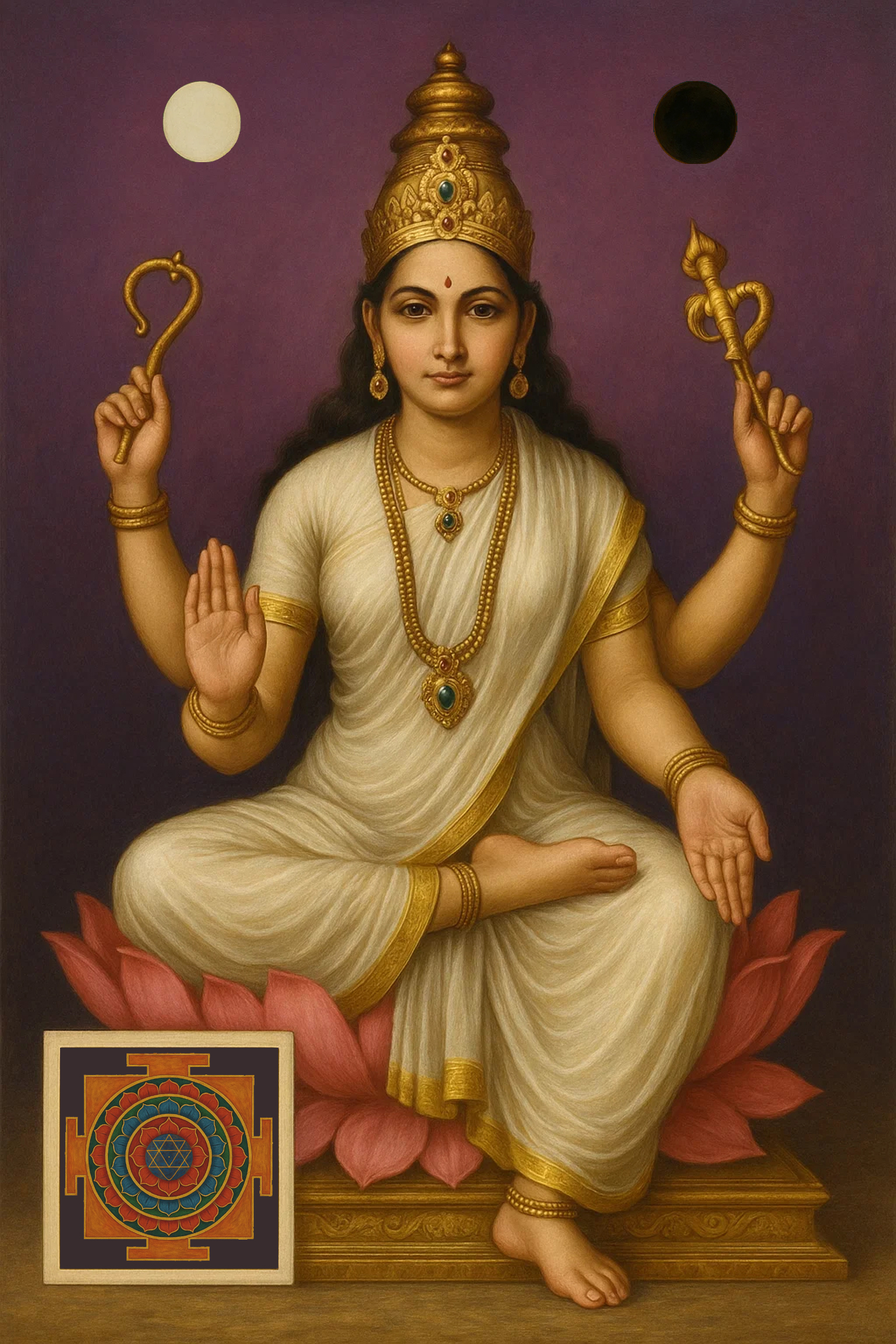
Goddess of Divine Artistry
Known as the Bright One, She shines with the fullness of the moon, bringing illumination, clarity, creativity and revelation. Her light is soft yet penetrating, revealing beauty and truth.
As the embodiment of divine artistry, She awakens the creative impulse, inspiring poets, musicians, visionaries, and seekers alike to give form to the ineffable.
Associated with the 15th lunar day, full moon – purṇimā.
Oṁ Hrīṁ Aiṁ
Citrā Nityā Namahā

Lalitā Tripurā Sundarī

Beautiful Goddess
of the Three Worlds
She is the heart and essence of the Nityās, the playful, infinitely beautiful one who transcends time, harmonising opposites into the bliss of non-duality.
She sits enthroned within the Śrīcakra, presiding over the cosmic dance with serene joy, holding creation, dissolution, and rebirth in effortless balance.
As the source and culmination of the lunar Goddesses, She is beyond lunar phases, embodying the timeless fullness of pure being.
Oṁ Aiṁ Sauḥ Klīṁ
Śrī Lalitā Tripurā Sundarīyai Namahā

